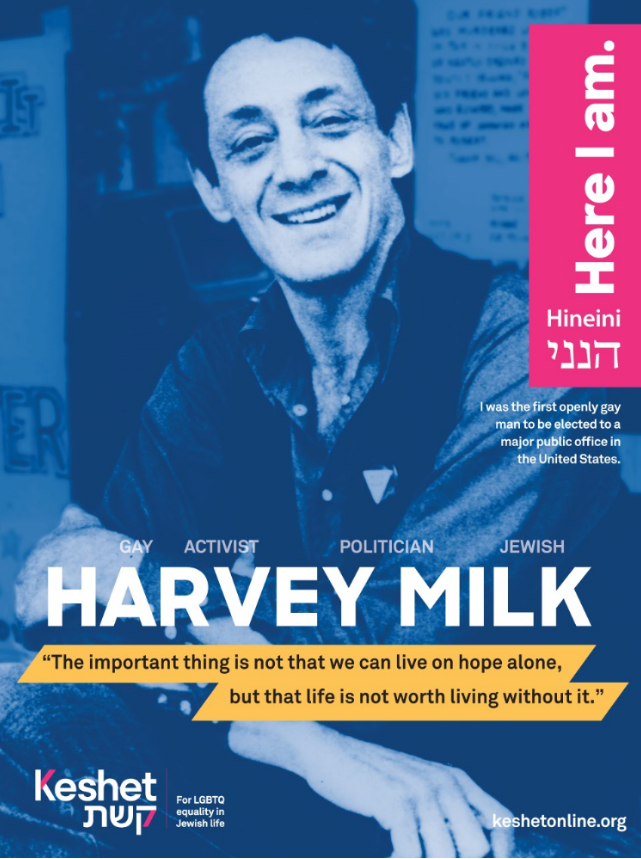
Students will learn about LGBTQ Jewish hero Harvey Milk, define activism, and feel empowered to be advocates and create change in society.
By Essie Shachar-Hill, Keshet

Time: 40-50 mins
Age: 6-16 (two separate lesson plans. See below.)
Materials:
Goals:
Considerations:
__________________________________________________________________________
Today we will be learning about a contemporary Jewish hero. It’s important to learn about Jewish heroes because there are so many extraordinary Jews in our history and present who have made important contributions to the Jewish people and the world at large. It’s also important to learn about lots of different Jewish heroes because it uplifts the fact that the Jewish community is diverse, and there is no one way to be Jewish. Today we are going to learn about Harvey Milk.
Read Pride: The Story of Harvey Milk and the Rainbow Flag aloud. Alternatively, show this video of the story being read aloud!
Ask students:
Have students create their own flag symbolizing something(s) they are proud of. Provide paper and markers for students to use. You may choose to provide an example. (“As a Jewish mixed race person, on my flag I will include symbols like…”) When students are done, have them share with the class. You might want to hang the flags around the classroom!
Once students have seen and learned about other students’ sources of pride, ask:
In this space, we welcome everyone to be their full selves. Like Harvey Milk, we work to support and advocate for other people too!
Watch “Harvey Milk’s Radical Vision for Equality” to learn about Harvey Milk’s life and legacy.
– What is activism? (See appendix for more resources to guide this conversation)
– What examples of activism did you identify in Harvey Milk’s story?
– Milk’s activism was largely about LGBTQ equality. He organized LGBTQ business owners to promote LGBTQ-owned businesses, sponsored an important anti-discrimination bill, and fought against Proposition 6, which aimed at firing gay teachers. Do you see LGBTQ activists working for similar or different goals today? What other causes or issues do you see activists working for today (in our community/in this school/in the country/in the world at large)?
Create a collaborative list on the whiteboard or virtual whiteboard
– Ask students: Do you think activism is important in Jewish American life? Why or why not? (You may choose to bring in Jewish values of tikkun olam, communal responsibility, etc. Maybe this ties into other Jewish historical figures you’ve taught about, like Heschel or the other LGBTQ Jewish Heroes in Keshet’s series)
Harvey Milk famously said “You have to give them hope.” Milk reminded people that a better world is possible. Have students pick one issue area (perhaps from the list above) that they are most drawn to. Ask students to think about what a better world would look and feel like, through the lens of that issue. Have students journal about what that world would look and feel like. Or, provide craft materials and ask students to create a collage that represents their vision. Have students share in pairs.
If there is access to computers and internet, give students time to research the activism happening around their chosen issue area. Ask students to identify one way they can contribute to that cause.